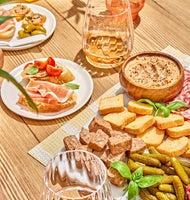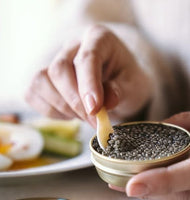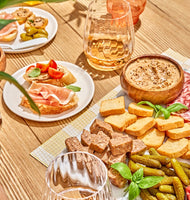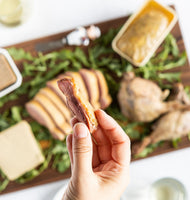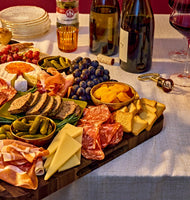
What not to put on a charcuterie board?
Avoid These Fruits on Your Charcuterie Board: A Comprehensive Guide
Fruit platters are a great addition to any gathering. However, not all fruits are created equal when it comes to presentation and taste. In this article, we will explore the 15 worst types of fruit to put on a food platter or table, and suggest alternatives that will enhance the overall appeal and flavor of your spread.
The Worst Types of Fruit for Platters
-
Durian - This spiky fruit has a strong odor that many find unpleasant, making it a risky choice for any public event.
-
Kiwano - Also known as horned melon, kiwano has a tough outer layer that makes it difficult to eat and unappealing to look at.
-
Passionfruit - While passionfruit can be delicious on its own, it can be messy and difficult to eat when served in a platter.
-
Jackfruit - This tropical fruit is large and messy to cut, making it inconvenient for guests to eat.
-
Starfruit - The shape of this fruit makes it difficult to incorporate into a platter without it looking awkward.
-
Pomegranate - The seeds of this fruit can be difficult to remove and can leave stains on clothing and surfaces.
-
Dragonfruit - While visually appealing, this fruit has a bland taste that may not appeal to everyone.
-
Papaya - The soft texture and pungent aroma of this fruit may be off-putting to some guests.
-
Guava - This fruit has a unique flavor that may not be appealing to everyone.
-
Pineapple - While pineapple can be delicious, it can be difficult to cut and may be too acidic for some guests.
-
Mango - This fruit has a slippery texture that can be difficult to eat with utensils.
-
Watermelon - This fruit can be messy and difficult to eat, especially when cut into large slices.
Alternative Fruits for Platters
Instead of these fruits, consider incorporating some of the following options into your platter:
- Grapes
- Berries (strawberries, raspberries, blueberries)
- Sliced apples and pears
- Sliced melons (cantaloupe, honeydew)
- Oranges and clementines
- Sliced peaches and nectarines
- Bananas
- Cherries
While there are many fruits to choose from when creating a platter, it is important to consider their visual appeal, taste, and ease of consumption. By avoiding the 15 worst types of fruit listed in this guide and incorporating some of the suggested alternatives, you can create a beautiful and delicious spread that will impress your guests.

